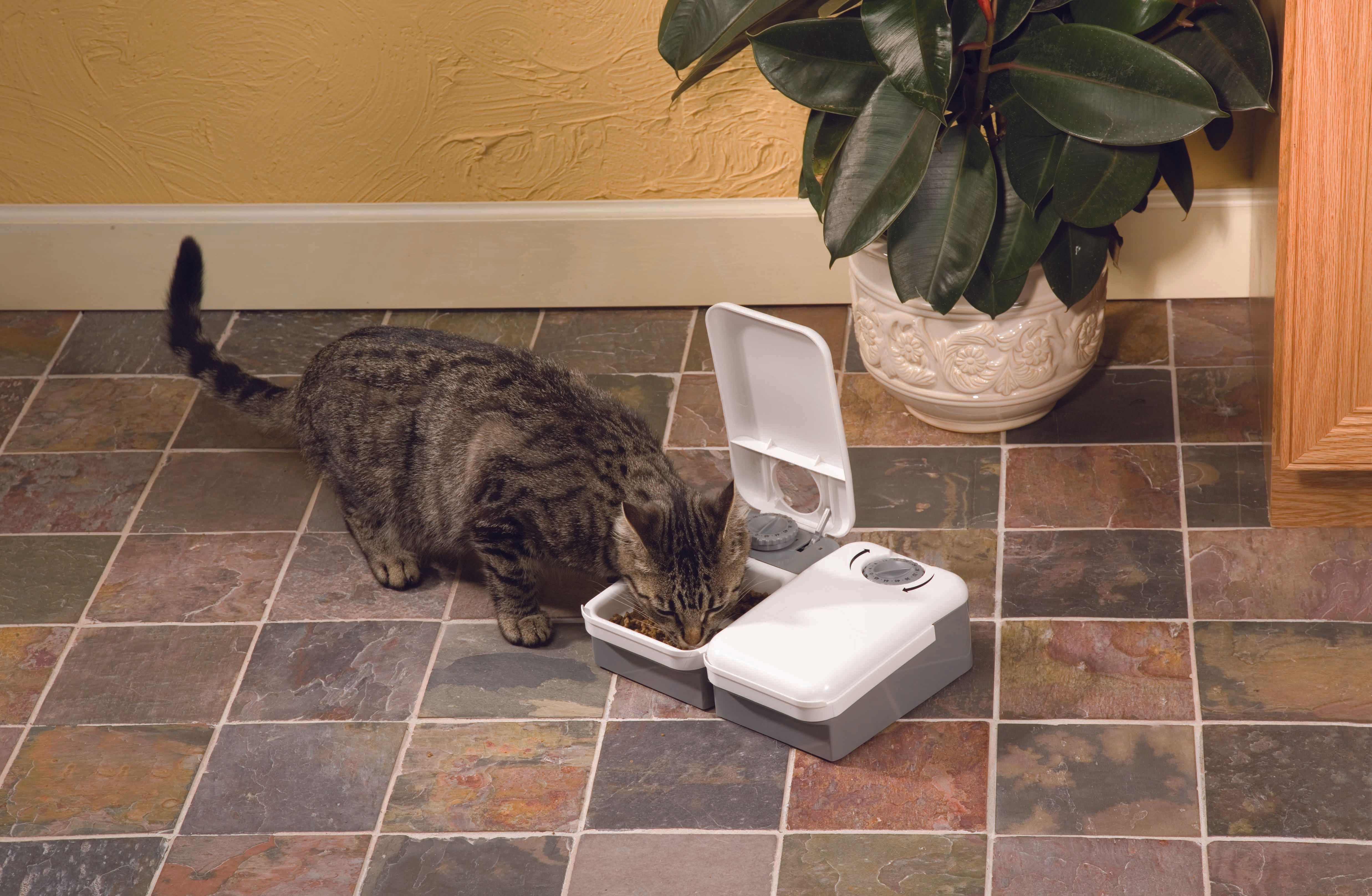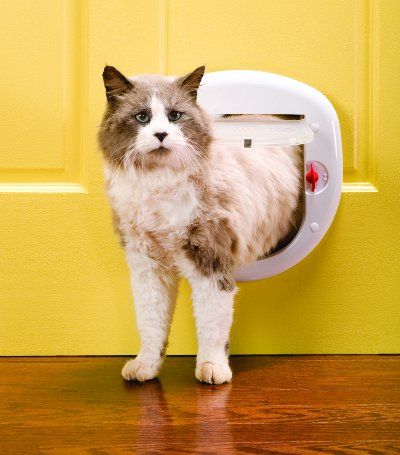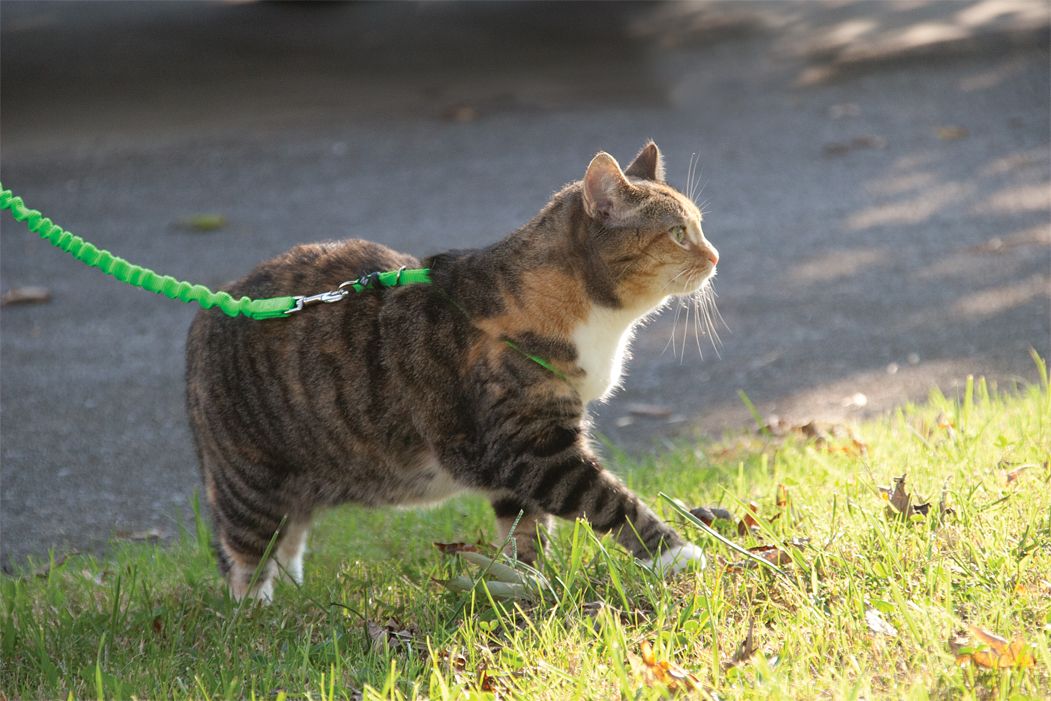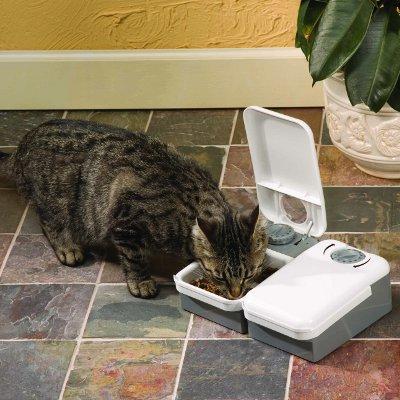 If you are like many people who live with several cats, you probably feed them "free-choice." When the food bowl’s empty, you simply refill it. What could be easier? This method works well if each cat eats only her fair share. Too often though, 1 cat gets a little greedy. As time goes on, she begins to gain excess weight while her housemates remain slim. They may even begin to lose weight unintentionally. This is not a healthy situation for any of your feline friends.
If you are like many people who live with several cats, you probably feed them "free-choice." When the food bowl’s empty, you simply refill it. What could be easier? This method works well if each cat eats only her fair share. Too often though, 1 cat gets a little greedy. As time goes on, she begins to gain excess weight while her housemates remain slim. They may even begin to lose weight unintentionally. This is not a healthy situation for any of your feline friends.
33% of Cats Are Obese
According to recent statistics, 1 in 3 adult cats are overweight or obese. This number increases to 1 in 2 when you only consider middle-aged cats. This is an alarming bit of information and veterinary professionals fear the problem could get even worse.
Starting a weight loss program in a multi-cat household is challenging but not impossible. It will take time and patience. Your veterinarian or veterinary technician can help you choose the right weight loss diet for your cat. Most importantly, they can calculate the number calories your kitty needs to eat per day. This is important because slow weight loss is the key to healthy weight loss. Losing weight too quickly can mean a loss of lean muscle tissue. A safe rate of weight loss is no more than 3% of your cat's body weight per week.
Keeping Cats Separate During Meals
Now for the challenging part. How do you keep your fat cat from eating the other cat's food? There are a number of ways this can be done. If you are feeding "free-choice," try feeding each of them in separate rooms. This change may take some getting used to
- Remove the bowl and whatever food is left in it after 30 minutes.
- Repeat this several times a day to start.
- Each day remove the food a little sooner. It will not be long before your cats learn that food is only available for a limited amount of time.
 What if you can't easily separate your cats at feeding time? A cat feeding box may be the answer for you. There are several types available. One commercially available box allows access only to the kitty wearing a special magnetized identification tag. Another type of feeding box has an opening only large enough for a thin cat to pass through.
What if you can't easily separate your cats at feeding time? A cat feeding box may be the answer for you. There are several types available. One commercially available box allows access only to the kitty wearing a special magnetized identification tag. Another type of feeding box has an opening only large enough for a thin cat to pass through.
Still another idea is to feed your slimmer kitties in an area that your couch potato cat is not likely to visit. Being less agile, she may not be inclined to climb or jump up to reach her meal. Setting up food bowls on a high counter or bookshelf may be enough of a deterrent.
What if your cats accidentally get into each other's food? Will your slimmer kitties be harmed if they eat some of the diet food? It will probably do them no harm. In fact, you may be able to feed all your kitties the diet food. But they have to eat enough of the reduced calorie food to meet their daily requirements. Check with your veterinarian to be sure you are feeding all your cats the appropriate amount.
Obesity-Related Health Risks
Obesity is not just a cosmetic problem. Just like for humans, there are associated health risks.
- Overweight or obese cats are at higher risk for type-2 diabetes.
- Carrying extra weight places stress on joints, leading to or worsening existing orthopedic disease.
- Excess fat stored around the heart and lungs can cause cardiac and respiratory illnesses.
- Obesity has been linked to certain cancers.
- An obese cat is not able to groom properly and may develop problems with her skin and coat.
- Extra weight will also place your pet at greater risk is she has to undergo an anesthetic procedure.
- Overweight or obese cats generally have shortened lifespans.
Exercise Is the Key
 Why this epidemic of obesity among our feline friends? Certainly genetics and metabolism do play a role. But easy access to highly palatable diets and decreased physical activity are also to blame. If the calories that are eaten throughout the day are not burned off, they are stored as fat. A concept that many of us are all too familiar with! The key is to control your cat's intake of calories while trying to increase her physical activity.
Why this epidemic of obesity among our feline friends? Certainly genetics and metabolism do play a role. But easy access to highly palatable diets and decreased physical activity are also to blame. If the calories that are eaten throughout the day are not burned off, they are stored as fat. A concept that many of us are all too familiar with! The key is to control your cat's intake of calories while trying to increase her physical activity.
Exercise your cat? Your kitty will probably not want to go on an early morning jog with you, but there are things you can do to get her moving. Exercise maintains and strengthens muscles, reduces stress, stimulates the mind, and improves the quality of life. Exercise will also increase your cat's metabolic rate to help burn off those extra calories. Laser pointers, interactive toys, and mechanical toys are all designed to get your cat moving.
Instead of feeding high calorie treats, begin an interactive play session. In addition to providing much needed exercise, it will also help strengthen the bond between you and your cat. Food puzzles offer the duel benefit of exercise while acting as a food dispenser. Food puzzles satisfy the natural instinct to hunt while slowing down food intake. And of course, there are many cats that enjoy walking on a harness. Walking on a leash may take some getting used to, but it may open up a whole new world for your cat!
Weight gain can be the result of a physical or metabolic dysfunction, so be sure to check with your veterinarian before starting any weight reduction program.






